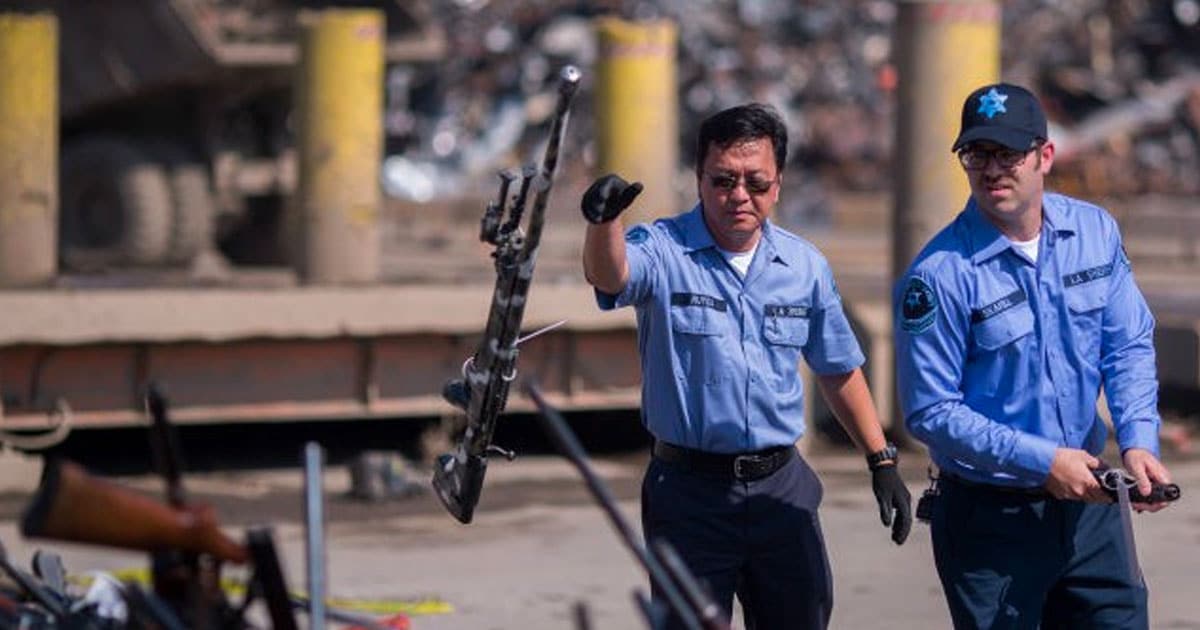
Bad actors are not lining up to rid themselves of weapons.
But now the same supporters are upset after finding out that these surrendered firearms are often broken down for parts and enter the secondary market.
This controversy began with a New York Times piece spotlighting a gun buyback program in Flint, Michigan. The city contracted Missouri-based Gunbusters to process the weapons turned in to authorities,
The outlet noted that Gunbusters has handled over 200,000 weapons in the last decade from roughly 950 law enforcement agencies across the nation. But much to the chagrin of the Times, the company does not always destroy the weapons accumulated through the buybacks.
Instead, it will only destroy the part of the firearm where the serial number is located.
The remaining parts are then liquidated on the secondary gun parts market. The company “averaged more than $90,000 a week in combined online sales of hundreds of disassembled guns from government clients.”
This did not sit well with Detroit anti-gun activist Rev. Chris Yaw, who described himself as “aghast and appalled” that gun parts survived the buybacks. “It tells me that our society is set up really well for buying and selling guns, but it is not set up very well for disposing of them.”
But the guns may be completely destroyed if the municipality is willing to pay for the service. The Times predictably described the gun parts hitting the market as a “loophole” in the process.
However, the process employed by Gunbusters and other similar services are clearly detailed in their written contracts with police departments.
Such was the case in Spartanburg, South Carolina. In May, authorities collected 128 weapons in a buyback which were then processed by Gunbusters. Police Chief Alonzo Thompson said later that he was aware of the details but was not worried if ATF regulations were followed.
But he noted he understood the concerns of some who may be upset by the guns becoming part of the secondary parts market.
Gun control activists want to have their cake and eat it too. If people voluntarily and willingly sell their guns to law enforcement, that’s their decision. But selling gun parts to private owners is hardly contributing to violent crime, and it’s just another way for anti-Second Amendment forces to attack a legal enterprise.
Further, Gunbusters and similar companies offer their services to law enforcement for free. This way, authorities may legitimately assert they are conducting the program without any cost to the taxpayer.
But how is Gunbusters supposed to offer this free service if there is no way to recoup their obvious expenses?
Company president Scott Reed explained that if his business cannot recover their operating costs through selling parts, “then we charge them.” This removes a key selling point for local officials to tell the public that they are performing an essential and cost-effective service.
Gunbusters reported that only about 2% of their clients pay to have the weapons fully destroyed. Among those who pay the fee to completely eradicate firearms are federal agencies such as the Secret Service.
Reed compared the process to organ donation. This allows collectors to maintain their weapons in good condition and repair them when necessary. “The people who are happiest with us are those who need parts for old guns that just aren’t made anymore.”
In other words, upstanding law-abiding citizens enjoying a hobby no doubt handed down for generations.
